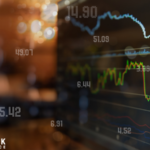OpenAI has made a significant organizational change by dissolving its dedicated “superalignment team,” which was responsible for ensuring the safety of advanced AI systems. This decision follows the departure of key team leaders and aims to integrate AI safety efforts across the entire company. OpenAI emphasizes that this move will help in maintaining safety while advancing AI technologies, reflecting the company’s adaptive approach to internal restructuring.
OpenAI, founded in December 2015, is an artificial intelligence research laboratory consisting of the nonprofit OpenAI Inc. and its for-profit subsidiary corporation OpenAI LP. The company focuses on developing and promoting friendly AI, with a mission to ensure that artificial general intelligence benefits all of humanity. The team at OpenAI works on a broad range of AI topics, from fundamental research to deployment and safety.
In 2023, OpenAI made headlines by forming the superalignment team to address AI safety concerns specifically. However, discord within the team and resource constraints led to its dissolution. The recent reorganization integrates the team members into the broader research framework, which is expected to streamline and enhance the company’s safety protocols. Comparing to past practices, OpenAI’s current strategy appears more inclusive and holistic, distributing responsibilities rather than isolating them within a single team.
Leadership Changes
The departure of Ilya Sutskever, OpenAI’s co-founder and chief scientist, and Jan Leike, a prominent member of the team, has been pivotal in this restructuring. Their exits underscore internal disagreements on the pace and direction of AI development. Sutskever and Leike’s resignations highlighted challenges in resource allocation and team management, prompting a re-evaluation of the company’s approach to AI safety.
Integration Approach
OpenAI’s current focus is on integrating former superalignment team members into its overall research efforts. This integration aims to maintain high safety standards while fostering collaboration across different teams. The company continues to have dedicated units for AI safety, including teams focusing on risk mitigation and preparedness for catastrophic scenarios, ensuring that safety remains a core aspect of its operations.
Future Directions
Moving forward, OpenAI has appointed John Schulman, a co-founder with expertise in large language models, as the new scientific lead for alignment work. This leadership change signals OpenAI’s commitment to balancing innovation with safety. By embedding safety experts within the broader research teams, OpenAI aims to create a more resilient and adaptable structure to tackle the evolving challenges in AI development.
Insights and Recommendations
- OpenAI’s integration strategy may lead to more cohesive and agile AI safety practices.
- Leadership changes could bring fresh perspectives but may also cause temporary disruptions.
- Continuous monitoring of AI safety is crucial as responsibilities become more distributed.
OpenAI’s decision to dissolve its superalignment team and distribute safety efforts across the organization reflects a strategic shift towards a more integrated approach. This restructuring is a response to internal challenges and aims to foster a cohesive environment where safety measures are embedded within the broader research agenda. By appointing John Schulman as the new alignment lead, OpenAI is demonstrating its commitment to maintaining safety while advancing AI technology. This approach may enhance collaboration and flexibility, crucial for addressing the fast-paced development landscape in AI. However, the success of this strategy will depend on its implementation and the ability to maintain stringent safety protocols amidst the reorganization.










